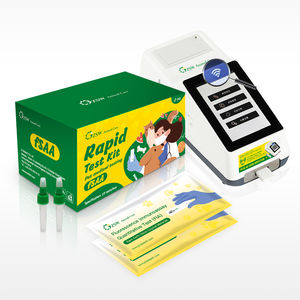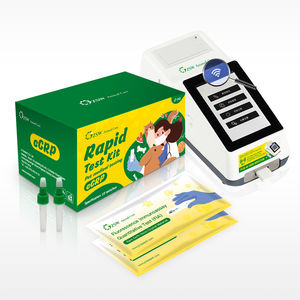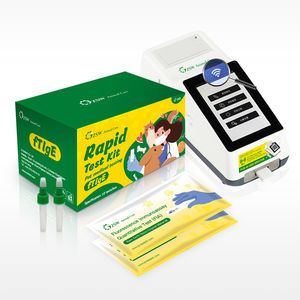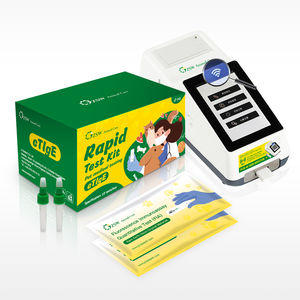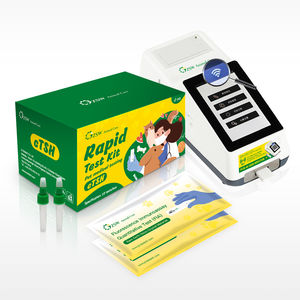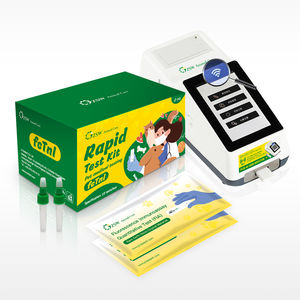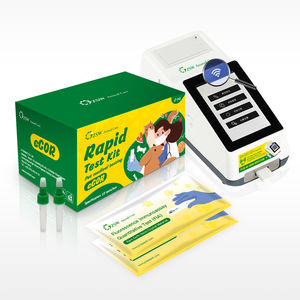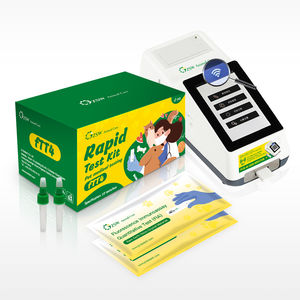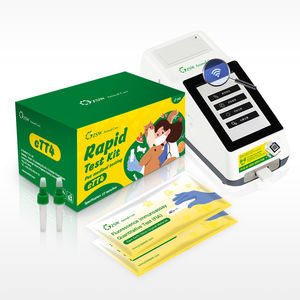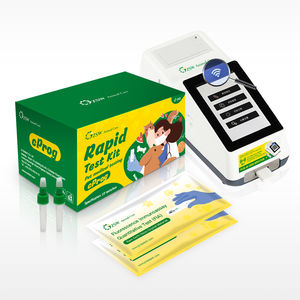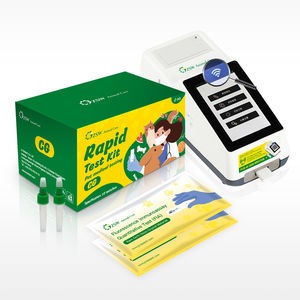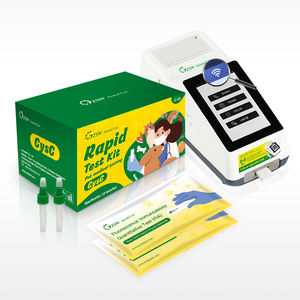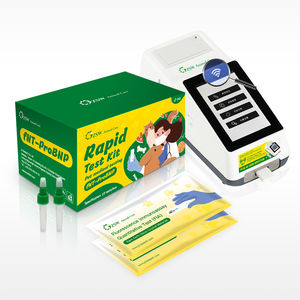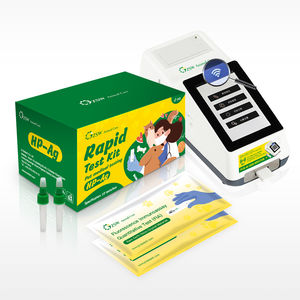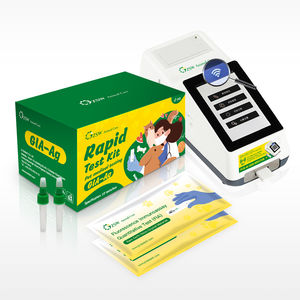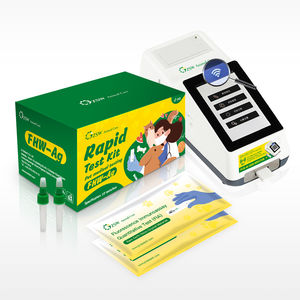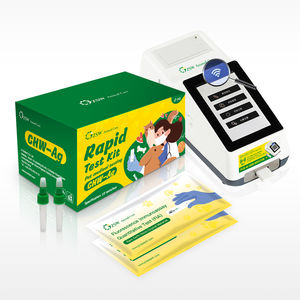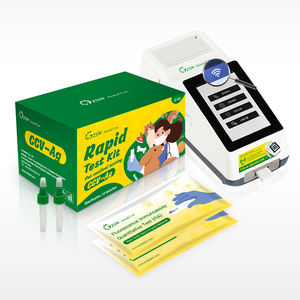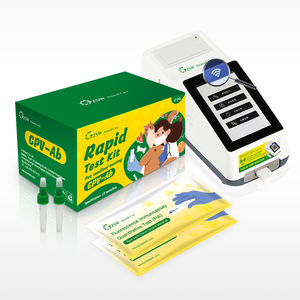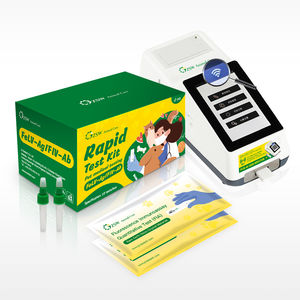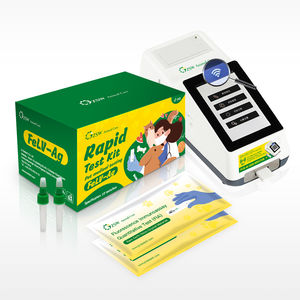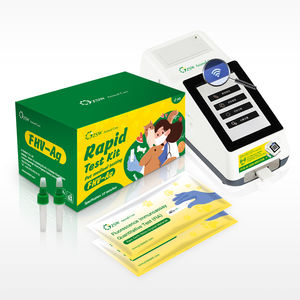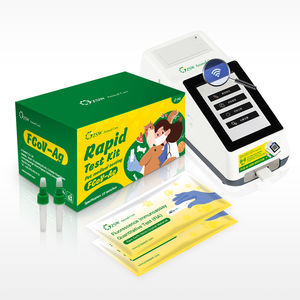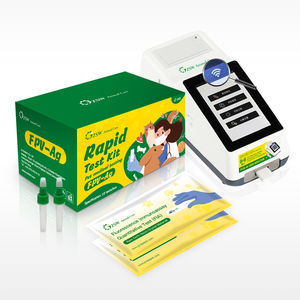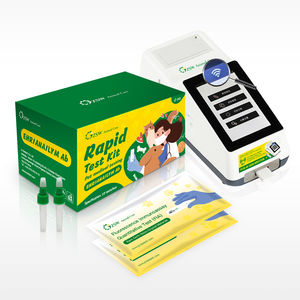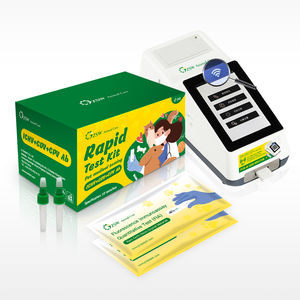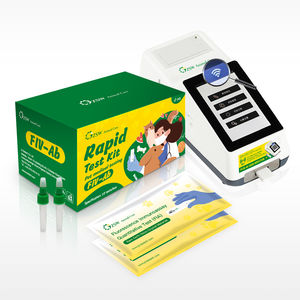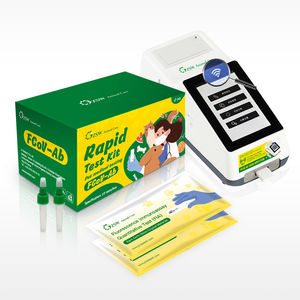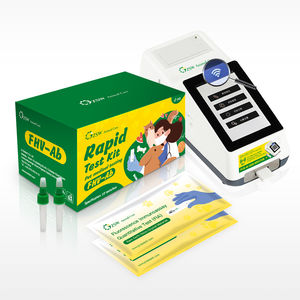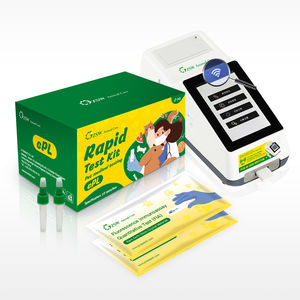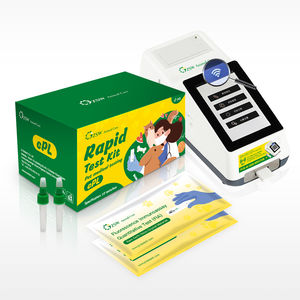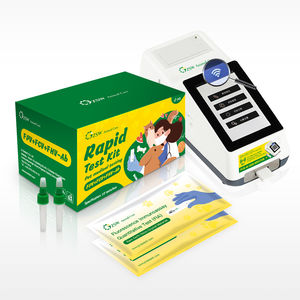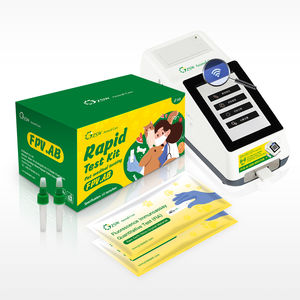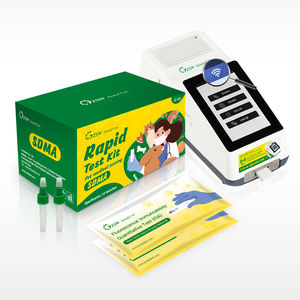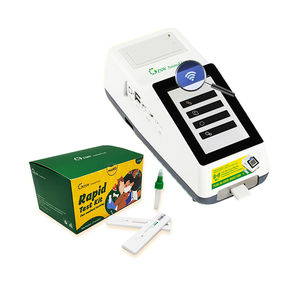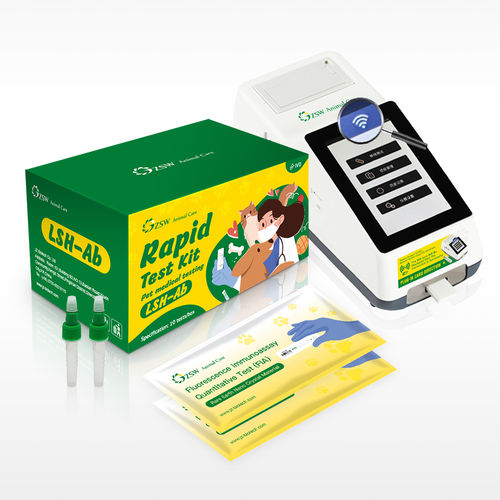
- Company
- Products
- Catalogs
- News & Trends
- Exhibitions
Leishmaniasis test kit LSH Abfor animalsIgGLeishmania

Add to favorites
Compare this product
Characteristics
- Applications
- leishmaniasis
- Patient type
- for animals
- Tested parameter
- IgG
- Micro-organism
- Leishmania
- Sample type
- serum, plasma
- Analysis mode
- immunochromatographic
- Result display time
10 min
- Sample volume
0.01 ml
(0.00034 US fl oz)
Description
The product uses fluorescent immunochromatography to quantitatively detect the cLSH Ab content in canine serum/plasma. Basic principle: T and C lines are drawn on the nitrocellulose membrane, and the T line is marked with a secondary antibody that specifically recognizes canine IgG. Antigens labeled with fluorescent nanomaterials that can specifically recognize cLSH Ab are sprayed on the binding pad.
The cLSH Ab in the sample first combines with the antigen labeled by the nanomaterial to form a complex, and then goes up the chromatography. The complex is captured by the T-line antibody. When the excitation light is irradiated, the nanomaterial emits a fluorescent signal, and the signal intensity is the same as that of the cLSH in the sample. Ab concentration is positively correlated.
Detailed
【Detection purpose】 Leishmania (Leishmania spp.) belongs to the protozoa of the trypanosome family Leishmania, which can cause leishmaniasis in humans and various animals, and is an important zoonotic disease. The main targets of Leishmania infection include hyraxes, rodents, canines and humans. The disease develops slowly and has a certain incubation period. The clinical manifestations are irregular fever, hepatosplenomegaly, progressive anemia and elevated plasma globulin. Sandflies are their vectors. Dogs are important conservation hosts for Leishmania donovani. After the dog is infected with this disease, the incubation period ranges from several weeks, several months to more than 1 year. Most dogs are in a state of recessive parasites after infection, and generally have no obvious symptoms. A small number of dogs have symptoms of skin damage,
VIDEO
Catalogs
No catalogs are available for this product.
See all of JZ Biotech‘s catalogsRelated Searches
- Assay kit
- Blood assay kit
- Serum assay kit
- Immunoassay assay kit
- Plasma assay kit
- Infectious disease detection kit
- Molecular test kit
- Respiratory infection test kit
- Whole blood detection kit
- Optical assay kit
- Clinical assay kit
- Cassette assay kit
- Fluorescence assay kit
- Lateral flow test kit
- Antigen assay kit
- IgG test kit
- Cell assay kit
- Animal assay kit
- Tissue detection kit
- Antibody assay kit
*Prices are pre-tax. They exclude delivery charges and customs duties and do not include additional charges for installation or activation options. Prices are indicative only and may vary by country, with changes to the cost of raw materials and exchange rates.



